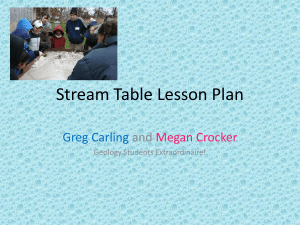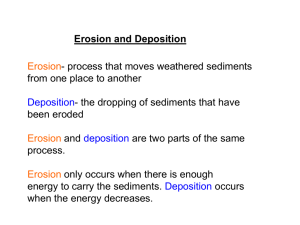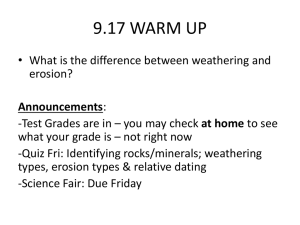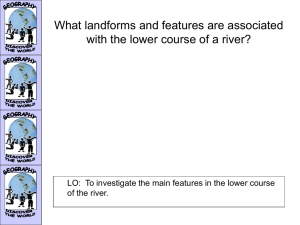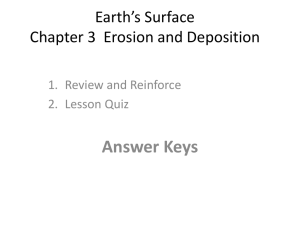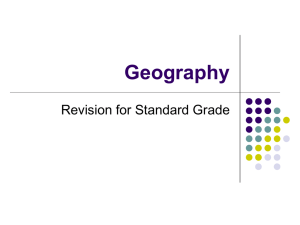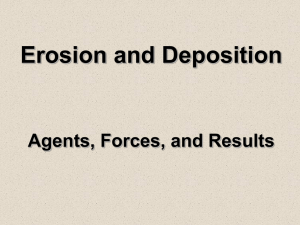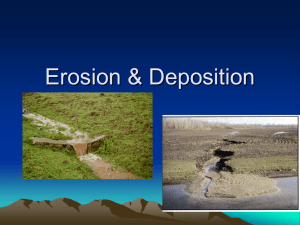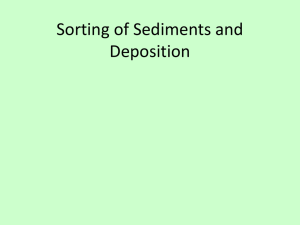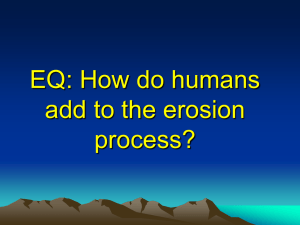Chapter_3_Review
advertisement
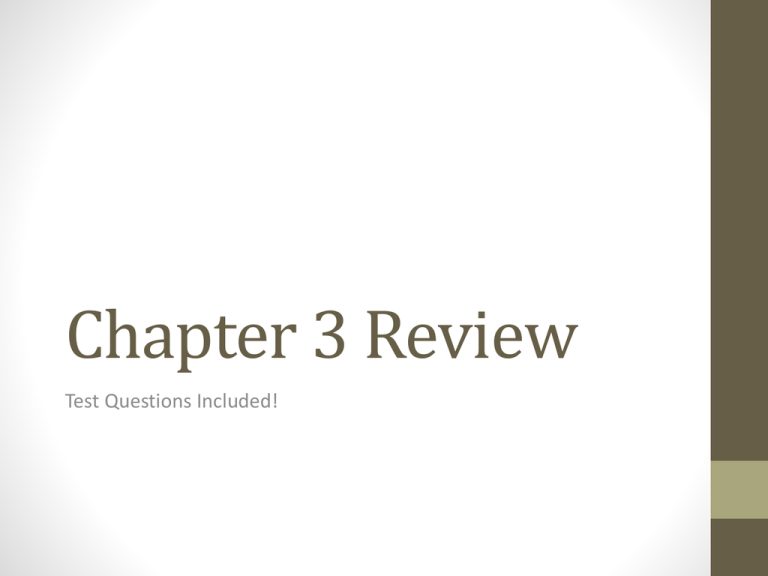
Chapter 3 Review Test Questions Included! Erosion and Deposition • What is the major agent of erosion that shapes Earth? • What are the four types of mass movement and how are they alike? • How are they different? • Moving Water!!! • Landslide, Mudflow, Creep, and Slump • They are all caused primarily by gravity. • They differ in water content and in how they move. Erosion and Deposition • Very slow movement of rock and soil is called__________. • Sudden slippage of large chunks of land in a large mass is called ___________. • Mass movement of runny, liquid mud is called ___________. • Creep • Slump • Mudflow Erosion and Deposition • When sediment is laid down in a new location it is called ______________. • What is the large deposit of sediment left behind where a stream leaves a mountain range called? Deposition Alluvial Fan Erosion and Deposition • The process by which natural forces move weathered materials from one place to another is called ____________. • The process by which wind removes surface materials is called ___________. • Erosion • Deflation Erosion and Deposition • Sediment deposited where a river flows into a lake or ocean is called a __________. • Heavy rains can cause a river to flow over its banks and create a ________ _________. • Delta • Flood Plain Erosion and Deposition • Water that moves over Earth’s surface is called ___________. • How much erosion a river can cause is dependent on three factors: _________, ___________, and ______________. • Runoff • Slope, volume of flow, and streambed shape Erosion and Deposition • Put these in order from smallest to largest: river, stream, rill, gully. • Which of these four always have water running in them? • Rill, gully, stream, river • Stream and river Erosion and Deposition • A loop-like bend in a river is called a _____________. • When a meander gets cut off from a river by damming up the ends, an _________ ______ is formed. • Meander • Oxbow lake Erosion and Deposition • A area of wavewashed sediment along a coast is called a ___________. • Beach sediment moves with the current in a process called ____________ __________. • Beach • Longshore drift Erosion and Deposition • Waves are • Erosion and deposition constantly changing the coastline. This • Sand is deposited by is due to wind. The wind continues ___________ and to blow the sand and _____________. build up dunes. Deflation • How are sand is most active in the dunes formed? desert because there is little growing to stop the wind. Erosion and Deposition • How are beaches formed? • A beach that projects out into the water is called a _______. • Rivers and streams carry eroded materials to the ocean. Longshore drift deposits these sediments to create beaches. • spit Erosion and Deposition • A large mass of ice that moves slowly over land is called a _________. • The two types of glaciers are ______ and _____________. • Glacier • Valley • Continental Erosion and Deposition • Which type of glacier spreads out over an island or continent? • How do glaciers form? • Glaciers pick up rocks in a process called_________. • Continental • More snow falls than melts. The snow must reach a depth of at least 30 to 40 meters. • Plucking Erosion and Deposition Erosion and Deposition • Waves are caused by _____ moving over the water. • A part of the shore that sticks out into the ocean is called a ______________. • Wind • Headland Erosion and Deposition •Good luck on the test! • If you decide to print this out to study, use handouts or 4 slides to a page so that you don’t use up all your ink.


